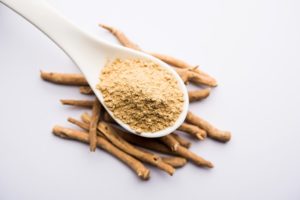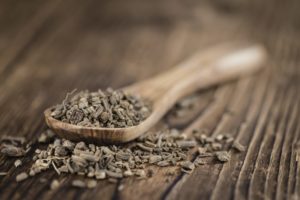Orexins
Nerve cells in the body, also called neurons, communicate with one another through chemical messengers called neurotransmitters. Neurotransmitters control virtually everything we do, influencing our thoughts and feelings, and coordinating our actions. One type of neurotransmitter is called a neuropeptide .
Orexins are neuropeptides, produced in a part of the brain called the hypothalamus. Out of the billions of cells in the brain, there are only 10,000 to 20,000 cells that produce orexin . These cells produce two types of orexins, called orexin-A and orexin-B.
These neuropeptides were discovered by two groups around the same time, so they have two interchangeable names within the scientific community . One group chose the name orexin, taken from the Greek “orexis”, which means appetite. The other group called these neuropeptides hypocretins because they were discovered in the hypothalamus. Therefore, it’s common to see orexin-A and orexin-B also called hypocretin-1 and hypocretin-2 .
Orexins in the Body
Orexin-producing neurons receive signals from the body, the emotions, and the environment, then release orexins that affect the entire central nervous system . In fact, orexins appear to play such diverse roles in the body that researchers contend that we’re only just beginning to understand their importance.
It’s believed that orexins are primarily excitatory, which means that they cause other neurons to become active and start sending their own signals. Among the many functions of orexins discovered, they appear to play an important role in sleep, energy metabolism, and mood.
Recent research has offered a hypothesis that attempts to explain all of the seemingly diverse roles of orexins in the body . This hypothesis suggests that orexins regulate behavior during times of physiological need, exposure to threats, and opportunities for reward.
Understanding the many effects of orexins in the body is exciting and valuable. Research in this area increases our understanding of the human body. It also offers promising new ways to treat a multitude of conditions, including insomnia, narcolepsy, depression, and even obesity.
Sleep and Arousal
It’s hypothesized that a primary role of orexins is to control sleep and arousal, and the neurons that release orexins are most active during the day. To keep us awake, these neuropeptides stimulate other neurons to release neurotransmitters that promote alertness, such as dopamine, serotonin, and norepinephrine.
Without enough orexins, the body has a hard time staying awake and alert. People diagnosed with type 1 narcolepsy have an 85% to 95% reduction in the number of neurons that produce orexins . This loss of orexin-producing neurons leads to the symptoms of narcolepsy, including excessive daytime sleepiness, sleep paralysis, hallucinations, and cataplexy.
While weight gain is not a symptom of narcolepsy, people with this condition are more likely to be overweight . Research suggests that the link between narcolepsy and weight gain may be related to orexin’s role in regulating physical activity.
Stress, Physical Activity, and Obesity
Orexins are important in the body’s response to stress . Taking in signals from the environment, orexin-producing neurons respond to pressure by exciting other neurons that increase heart rate and blood pressure, helping the body transition from a resting state to one where it’s ready to respond and move.
With fewer chemical signals to motivate responses, deficiencies in orexins are linked to physical inactivity and obesity. Animal research has shown that mice who lose their orexin-producing neurons are less physically active, have decreased energy metabolism , and are more likely to develop obesity and diabetes, even when they consume fewer calories.
Mood and Memory
Orexins also excite neurons important in regulating mood. Having too much or too little orexin activity has been linked to depression and other mental health conditions, such as anxiety, panic disorder, addictions, and post-traumatic stress disorder.
These neuropeptides also impact mood through their function in a part of the brain called the hippocampus. Orexins encourage the creation of new neurons in the hippocampus, which is important in learning, memory, and spatial abilities. Without sufficient orexins, people can develop problems with learning and memory.

Sleep Aids Targeting Orexins
Since orexins stimulate wakefulness, blocking the effects of these neuropeptides is one way to treat some sleep disorders. Dual orexin receptor antagonists (DORAs) are a new type of prescription sleep aid that targets the body’s orexin system. These medications work by acting as orexin receptor antagonists, meaning that they block the effects of orexins in the body, reduce the drive to stay awake, and facilitate sleep.
Two types of DORAs are currently approved by the Food and Drug Administration (FDA) for the treatment of insomnia in adults: suvorexant and lemborexant . Newer DORAs are still in development.
DORAs differ from other types of sleep aids because they affect different systems in the body. Over-the-counter sleep aids, like diphenhydramine and melatonin, cause sedation or help to regulate the body’s circadian rhythm. Prescription sleep aids promote sleep in other ways, like targeting GABA receptors in the brain, and may come with undesirable side effects, like memory issues, behavior changes, and even hallucinations.
Researchers hope that, by targeting the body’s orexin system, DORAs may be effective with fewer side effects. In fact, both FDA-approved DORAs have been shown to improve sleep quality in people with insomnia and the most common side effect associated with their use is drowsiness. They may also improve sleep architecture, and have been used to improve delirium in hospitalized patients.
While DORAs offer a promising new approach to treating insomnia, they’re not appropriate for everyone. Before taking any medication, be sure to consult with your doctor or a sleep specialist. For many people with insomnia and other sleep issues, it’s helpful to start by focusing on behavior changes, like improving your sleep hygiene, before considering medication.
Medical Disclaimer: The content on this page should not be taken as medical advice or used as a recommendation for any specific treatment or medication. Always consult your doctor before taking a new medication or changing your current treatment.

Still have questions? Ask our community!
Join our Sleep Care Community — a trusted hub of sleep health professionals, product specialists, and people just like you. Whether you need expert sleep advice for your insomnia or you’re searching for the perfect mattress, we’ve got you covered. Get personalized guidance from the experts who know sleep best.
References
14 Sources
-
Burbach J. P. (2011). What are neuropeptides?. Methods in molecular biology (Clifton, N.J.), 789, 1–36.
http://link.springer.com/10.1007/978-1-61779-310-3_1 -
Błaszczyk J. W. (2020). Energy Metabolism Decline in the Aging Brain-Pathogenesis of Neurodegenerative Disorders. Metabolites, 10(11), 450.
https://pubmed.ncbi.nlm.nih.gov/33171879/ -
Goodrick, S. (2015). Orexin or hypocretin?. The Lancet. Neurology, 14(3), 249.
https://linkinghub.elsevier.com/retrieve/pii/S1474442215700323 -
Sakurai, T., Amemiya, A., Ishii, M., Matsuzaki, I., Chemelli, R. M., Tanaka, H., Williams, S. C., Richardson, J. A., Kozlowski, G. P., Wilson, S., Arch, J. R., Buckingham, R. E., Haynes, A. C., Carr, S. A., Annan, R. S., McNulty, D. E., Liu, W. S., Terrett, J. A., Elshourbagy, N. A., Bergsma, D. J., … Yanagisawa, M. (1998). Orexins and orexin receptors: a family of hypothalamic neuropeptides and G protein-coupled receptors that regulate feeding behavior. Cell, 92(4), 573–585.
https://linkinghub.elsevier.com/retrieve/pii/S0092867400809496 -
de Lecea, L., Kilduff, T. S., Peyron, C., Gao, X., Foye, P. E., Danielson, P. E., Fukuhara, C., Battenberg, E. L., Gautvik, V. T., Bartlett, F. S., 2nd, Frankel, W. N., van den Pol, A. N., Bloom, F. E., Gautvik, K. M., & Sutcliffe, J. G. (1998). The hypocretins: hypothalamus-specific peptides with neuroexcitatory activity. Proceedings of the National Academy of Sciences of the United States of America, 95(1), 322–327.
https://pubmed.ncbi.nlm.nih.gov/9419374/ -
Chieffi, S., Carotenuto, M., Monda, V., Valenzano, A., Villano, I., Precenzano, F., Tafuri, D., Salerno, M., Filippi, N., Nuccio, F., Ruberto, M., De Luca, V., Cipolloni, L., Cibelli, G., Mollica, M. P., Iacono, D., Nigro, E., Monda, M., Messina, G., & Messina, A. (2017). Orexin System: The Key for a Healthy Life. Frontiers in physiology, 8, 357.
https://pubmed.ncbi.nlm.nih.gov/28620314/ -
Mahler, S. V., Moorman, D. E., Smith, R. J., James, M. H., & Aston-Jones, G. (2014). Motivational activation: a unifying hypothesis of orexin/hypocretin function. Nature neuroscience, 17(10), 1298–1303.
https://pubmed.ncbi.nlm.nih.gov/25254979/ -
Thannickal, T. C., Moore, R. Y., Nienhuis, R., Ramanathan, L., Gulyani, S., Aldrich, M., Cornford, M., & Siegel, J. M. (2000). Reduced number of hypocretin neurons in human narcolepsy. Neuron, 27(3), 469–474.
https://pubmed.ncbi.nlm.nih.gov/11055430/ -
Chabas, D., Foulon, C., Gonzalez, J., Nasr, M., Lyon-Caen, O., Willer, J. C., Derenne, J. P., & Arnulf, I. (2007). Eating disorder and metabolism in narcoleptic patients. Sleep, 30(10), 1267–1273.
https://pubmed.ncbi.nlm.nih.gov/17969460/ -
Grafe, L. A., & Bhatnagar, S. (2018). Orexins and stress. Frontiers in neuroendocrinology, 51, 132–145.
https://pubmed.ncbi.nlm.nih.gov/29932958/ -
Zink, A. N., Perez-Leighton, C. E., & Kotz, C. M. (2014). The orexin neuropeptide system: physical activity and hypothalamic function throughout the aging process. Frontiers in systems neuroscience, 8, 211.
https://pubmed.ncbi.nlm.nih.gov/25408639/ -
Nollet, M., & Leman, S. (2013). Role of orexin in the pathophysiology of depression: potential for pharmacological intervention. CNS drugs, 27(6), 411–422.
http://link.springer.com/10.1007/s40263-013-0064-z -
Kuriyama, A., & Tabata, H. (2017). Suvorexant for the treatment of primary insomnia: A systematic review and meta-analysis. Sleep medicine reviews, 35, 1–7.
https://linkinghub.elsevier.com/retrieve/pii/S108707921630096X -
Scott L. J. (2020). Lemborexant: First Approval. Drugs, 80(4), 425–432.
http://link.springer.com/10.1007/s40265-020-01276-1






















